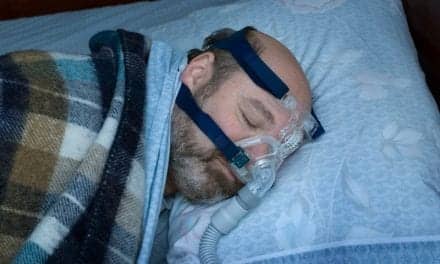New guidelines from the American Heart Association recommend devices rather than tape for securing tubes. Knowing how to use and secure devices is crucial, as is knowing when they are or are not appropriate.
Securing the airway is one of the most critical aspects of ventilation and resuscitation.1 The potential exists for serious morbidity and mortality related to endotracheal-tube migration during patient care and transfer. RTs must assess the airway and take appropriate measures to avoid displacement of the endotracheal tube. Important new recommendations for the conduct of advanced cardiac life support (ACLS) were outlined at the Guidelines 2000 Conference for Cardiopulmonary Resuscitation and Emergency Cardiovascular Care, 2000, Dallas. Because some evidence suggested that the incidence of endotracheal-tube dislodgment after successful tracheal intubation may be greater than previously suspected, properly securing the endotracheal tube was emphasized, with consideration of the use of commercial endotracheal-tube holders.
Device Benefits
The American Heart Association (AHA) 2002 ACLS guidelines2 recommend the use of endotracheal-tube–stabilization devices instead of tape. These devices provide secure stabilization of the tube at the correct depth and help prevent accidental extubation. Reducing the risk of tube migration is another benefit of endotracheal-tube–stabilization devices.3 Proper use of these stabilization devices minimizes skin breakdown while eliminating the cost and inconvenience of repeated tape applications.
Endotracheal-tube–stabilization devices are a significant improvement over tape fastening methods. Designed to secure the endotracheal tube in place after its insertion in the trachea, these commercially available stabilization devices are simply and rapidly applied during emergency and nonemergency situations. Endotracheal-tube–stabilization devices are designed to provide the most effective endotracheal holder for respiratory care patients, both for the patient’s comfort and for the care provider’s ease of use. These devices secure the endotracheal tube in place via use of a quick-set screw or a hook-and-loop–fastener strapping system that also facilitates easy removal without the bother and mess of tape. Many of the devices feature a bite block that protects both the tube and the patient. The bite block protects the teeth and gums and keeps the endotracheal tube open. A wide strap for circumferential wrapping of the patient’s head secures the device; it remains in place, even when wet. The need for tape is eliminated, and an oral access point allows suction to be applied without removing the device.
Preparation and Adjustment
If the patient has previously been intubated, the tube position charted during that episode should be compared with the current endotracheal-tube depth at the naris, teeth, or gum line. The RT should auscultate to ensure that bilateral breath sounds are present, then confirm placement of the endotracheal tube using capnography. Ascertainment of tube placement using radiography should take place prior to endotracheal tube stabilization, if this is the facility’s policy.
In a nonemergency situation, the patient’s face is cleaned to remove all secretions and moisture from the application areas. The endotracheal tube is placed in the appropriate position in the mouth, based upon the type of endotracheal-tube–stabilization device in use. The tube may be rotated in the mouth to prevent tissue erosion and to facilitate oral care.
The endotracheal tube should be cleaned from the point of placement to the endotracheal-tube–connector fitting to remove all moisture and secretions. The endotracheal tube is held until the endotracheal-tube–stabilization device has been secured according to the manufacturer’s directions. The RT then verifies that the endotracheal tube’s centimeter marking is aligned with the appropriate anatomical landmark.
Documentation is critical to ongoing patient care. The time of tube placement, the endotracheal-tube size, and the centimeter marking (with its anatomical landmark designation) must be charted on the ventilator flow sheet.
To adjust the depth of the endotracheal tube, the RT can release the endotracheal-tube mechanism, adjust the endotracheal-tube position, and retighten the device. The endotracheal tube must be held once the mechanism is loosened to prevent accidental extubation. Proper tube position is then confirmed using auscultation, capnography, and radiography. Skin integrity is checked, and the patient’s facial and neck skin are cared for appropriately.
Precautions
To prevent possible tube migration or extubation, RTs should periodically inspect the endotracheal-tube–stabilization device and the patient. The frequency of patient checks should be increased in the presence of significant diaphoresis or copious oral secretions. The space between the neck band and the patient’s neck should be inspected if a neck strap is used; the band must be loose enough to allow one finger to be inserted. Immediate adjustment of the neck band is required if the RT is unable to pass a single finger between the patient’s skin and the band.
After providing skin care, the RT should make sure that the device’s skin-contact areas are completely dry and are free of oils. The endotracheal-tube pilot balloon line must not be secured with the endotracheal tube.
Clinical Benefits
Critically ill patients often require the use of an endotracheal holder for proper airway maintenance.4 The commonly used tape and ties allow tube migration and accidental extubation, as well as limiting movement and access to the patient’s oral cavity.
The primary benefit of an endotracheal-tube stabilizer is, of course, a reduction in the occurrence of accidental extubation. Secondary benefits address the clinical problems associated with maintaining the airway in the intubated patient. These include the ease of putting the device on the patient in emergency and nonemergency situations, the biocompatibility of the holder with the patient’s skin, the ease of moving the tube to permit access to the oral cavity, the compatibility of the device with MRI machines, the low cost of the device, the integral bite block that prevents occlusion of the tube by biting, the easy locking and unlocking of the mechanism used to secure the tube, the latex-free materials used in the device, and the broad surface that protects the patient’s facial skin from pressure points. The use of a screw clamp or a hook-and-loop strap system secures the endotracheal tube to the holder without occluding the tube.5 The broad, soft neck straps secure the system to the patient’s head and neck while minimizing skin damage.
To prevent endotracheal-tube dislodgment after proper insertion, the 2000 AHA guidelines recommend the use of commercial endotracheal-tube holders over the common techniques of taping and tying. RTs could benefit from less complex systems, since they are the individuals who apply the device to the patient. Patients and RTs both benefit from better access to the mouth for oral hygiene.
Dan Hatlestad is an author and a member of the RT Editorial Advisory Board.
References
1. Boulain T. Unplanned extubations in the adult intensive care unit. Am J Respir Crit Care Med. 1998;157:1131-7.
2. American Heart Association Guidelines 2000. Dallas: AHA; 2000.
3. Kaplow R, Bookbinder M. A comparison of four endotracheal tube holders. Heart Lung. 1994;23:59-66.
4. Epstein SK, Nevins ML, Chung J. Effect of unplanned extubation on outcome of mechanical ventilation. Am J Respir Crit Care Med. 2000;161:1912-16.
5. Tominaga GT, Rudzwick H, Scannell G,Waxman K. Decreasing unplanned extubations in the surgical intensive care unit. Am J Surg. 1995;170:589-90.








